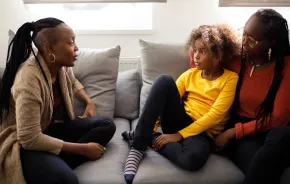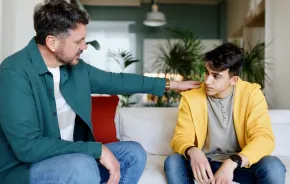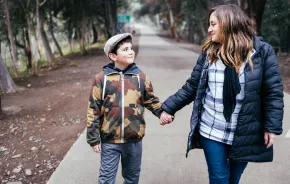 Annie counts to 50 every day as I point to the numbers on the number line. At number 30 she never says 30. On a recent day she said, “50.”
Annie counts to 50 every day as I point to the numbers on the number line. At number 30 she never says 30. On a recent day she said, “50.”
“Nope. What number is this? It’s like the number 3 … ”
“Mom, are the other kids in my class smarter than me?”
I’m not frustrated by the fact that my 9-year-old can’t count to 50 yet. I’m on task.
“No, no, look at me, Annie. Your brain just works differently than their brains. It’s just taking you longer to learn these numbers. And you are not the only one that goes to tutoring.”
She has heard this sentence about her brain before, and I have counted off the names off other kids we know that go to tutoring, too. She looked at me, and the idea clicked in.
“Yeah, I saw Justin has a chart like I do. I bet he sees my tutor.”
We turned to the number line again. I told Annie the number she is seeking is 30, and she counted on for me.
But still. And yet. I carried these minutes with her for the next week. I repeated them to other people. I told one of Annie’s five tutors that I thought it was weird that she can’t count to 50 yet, after watching my older daughter learn things in such a natural manner, one thing clicking, and then another and another and another.
“It’s not weird. It’s just Annie’s brain. For some reason, her brain is having a hard time with the number 30,” said her tutor.
“I can’t wrap my mind around it. I find it weird.”
“It’s not. We are just talking about Annie’s brain. It works differently,” replied the tutor.
At the same time as I am thinking about Annie’s brain and the idea of being smarter than someone else, I read a nonfiction book about what it is like to be blind. I’m fascinated by how the people with vision loss use their other senses. I think about Annie’s amazing sense of hearing, how she can’t be in loud environments. The sounds of our neighbors talking while she is trying to go to sleep sounds so loud to her that she has a hard time falling asleep. She recently wondered if there were people in our house, feeling sure they were right there, and we had to convince her that it was just the neighbors talking next door.
She has an amazing memory, too, recalling things like a sign she saw when we visited Pike Place Market more than five years ago.
Yet she cannot remember the number 30.
And she asks me if all of her classmates are smarter than her.
I am teaching her that smartness is not defined by school. I am teaching myself that smartness is not defined by counting to 50, second-grade spelling tests, and the neatness and size of one’s printing. I think I am having a harder time with this idea than my child.
I interviewed the author of the book about blindness, For the Benefit of Those Who See. Rosemary Mahoney is gracious and smart. I told her the book reminds her of my daughter’s brain, and we think she has dyslexia. Mahoney told me her brother has dyslexia. She said, yes, her book on blindness is, in many ways, about any kind of difference.
“My book is about understanding other people, the way their bodies and minds work. Although we have an ideal of how a human brain should work, there isn’t just one way of being,” she said. “Oliver Sacks writes about this. When people have a neurological difference, they often have other strengths that other people don’t understand and think they are kind of freaky. But blind people have gifts that I wish I had.”
Annie has gifts I wish I had. She can sing in tune and memorize lyrics and dance in a way that my body just cannot manage. Still, she pointed out to me that she can’t spell the way her sister can.
So I did my mom trick and pointed out her singing in tune and her amazing dance moves. And then we danced.
And the fact that sometimes I still can’t see that Annie is as smart as her classmates, well, it took a rest as we moved our sock-covered feet across our wooden living room floor.











